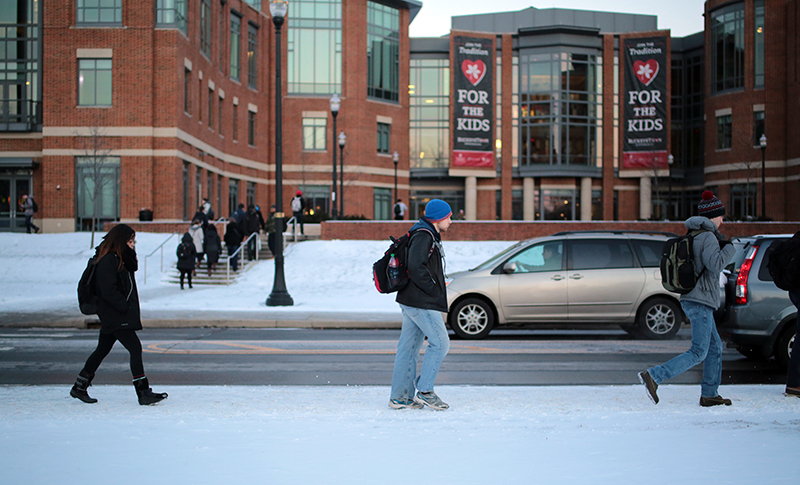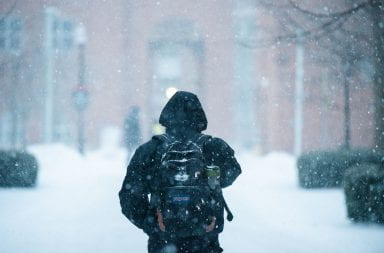
Students brave the cold and snow while walking to class on Jan 12. Credit: Muyao Shen | Asst. Photo Editor
The warm weather streak in Columbus seems to be ending with an onslaught of sleet and chill this week. Students at Ohio State are getting out their big coats and preparing for more snow. With the season changing, The Lantern talked to R. Ryan Patel, senior staff psychiatrist at OSU, about seasonal affective disorder.
Q: What is seasonal affective disorder and how many people are affected by it?
A: Seasonal affective disorder, or SAD, is mainly characterized by depressive symptoms that come and go during a particular time of year. In addition to feeling sad, some people also notice decreased energy, increased sleep, increased appetite with carbohydrate craving, weight gain, irritability, conflict with others, heavy feelings in arms or legs. Many consider SAD to be a subtype of either depression or bipolar illness. According to studies, roughly 10 to 20 percent of the population is affected by some form of the condition.
Q: Is there a common time of the year for SAD to occur?
A: The most common time for SAD to occur is in the winter months, but some people can have it in the summertime.
Q: What are some ways to treat SAD?
A: Treatment options include healthy lifestyle habits such as healthy eating habits, exercise, staying socially connected and avoidance of alcohol, excessive caffeine and drugs, counseling, prescription medication and prescription light therapy. Some people with SAD will need a combination of these treatments to obtain benefit.

![A selection of songs to curate the perfect playlist for any and all Valentine's Day occasions. Credit: San Jose Mercury News 2007 [Original caption: 300 dpi Daymond Gascon color illustration of red hearts emitting from radio.]](https://www.thelantern.com/files/2024/02/20071219_Radio_gives-db9f5f608dbe6af6-384x253.jpg)
